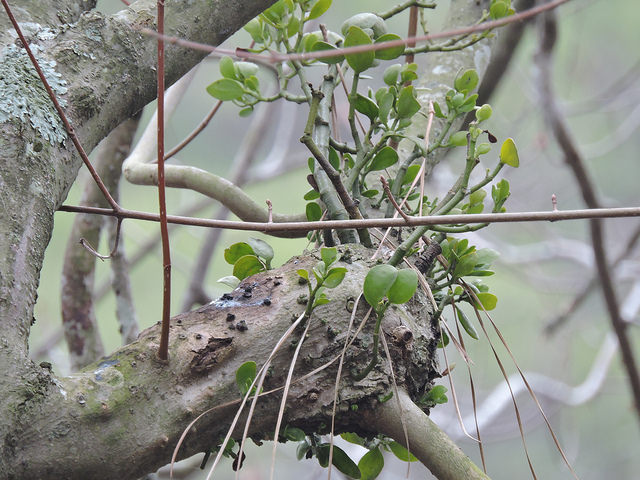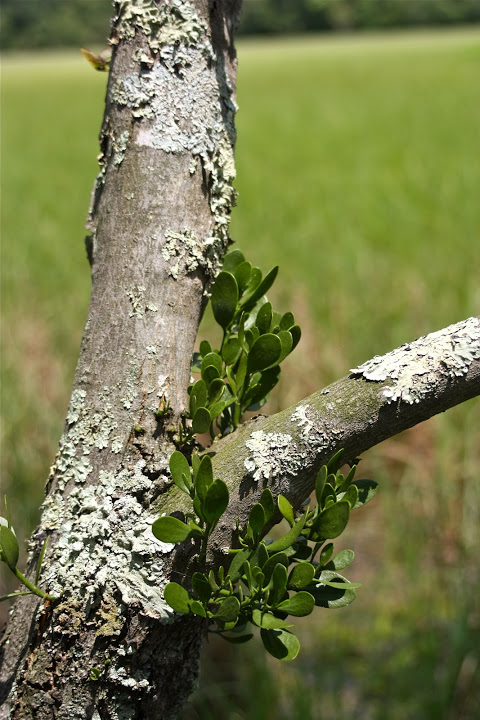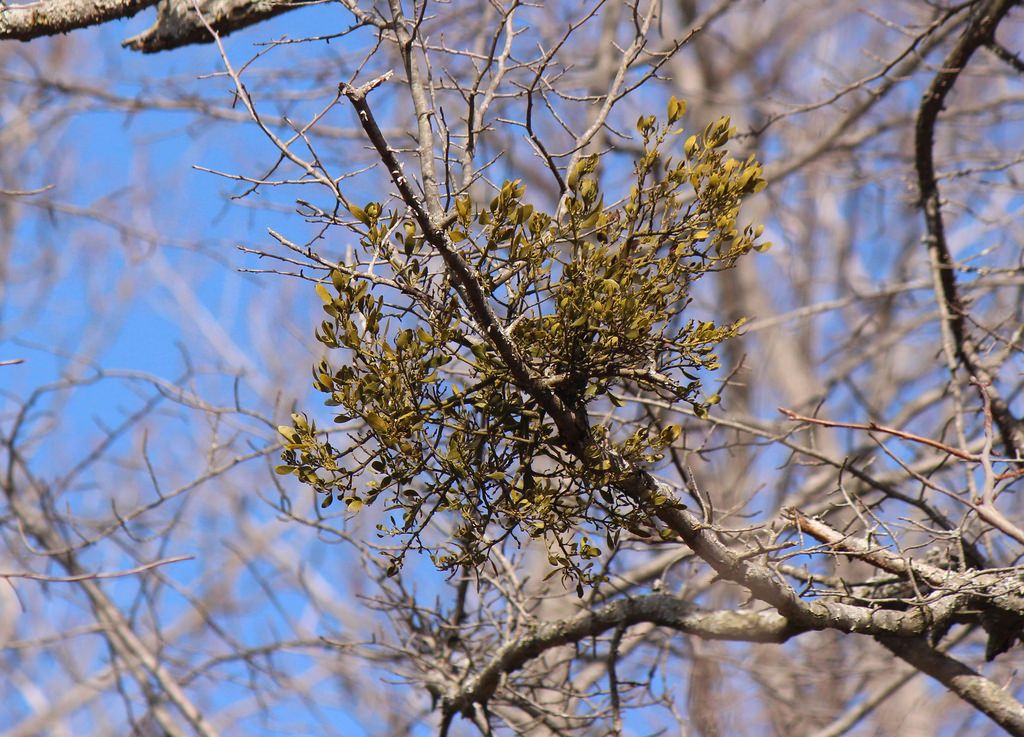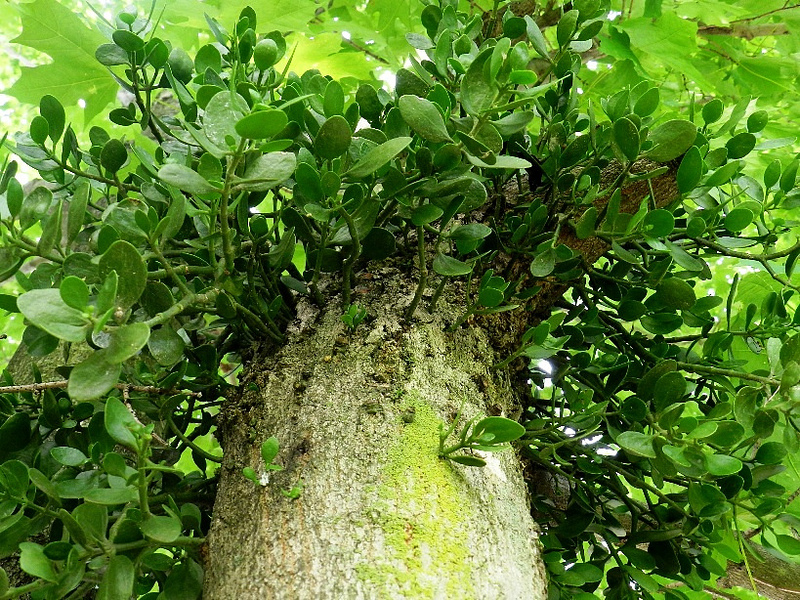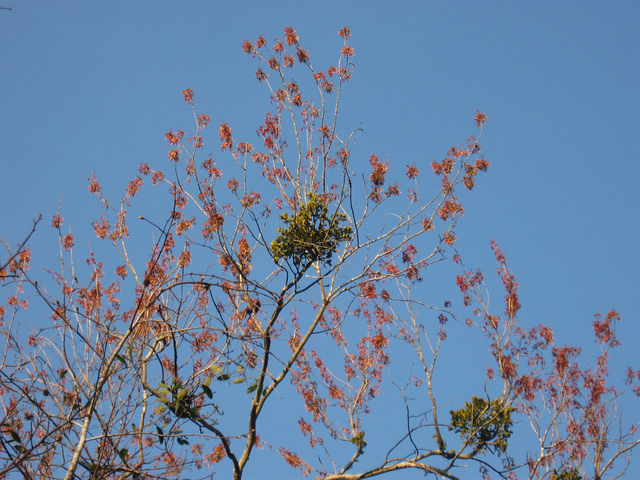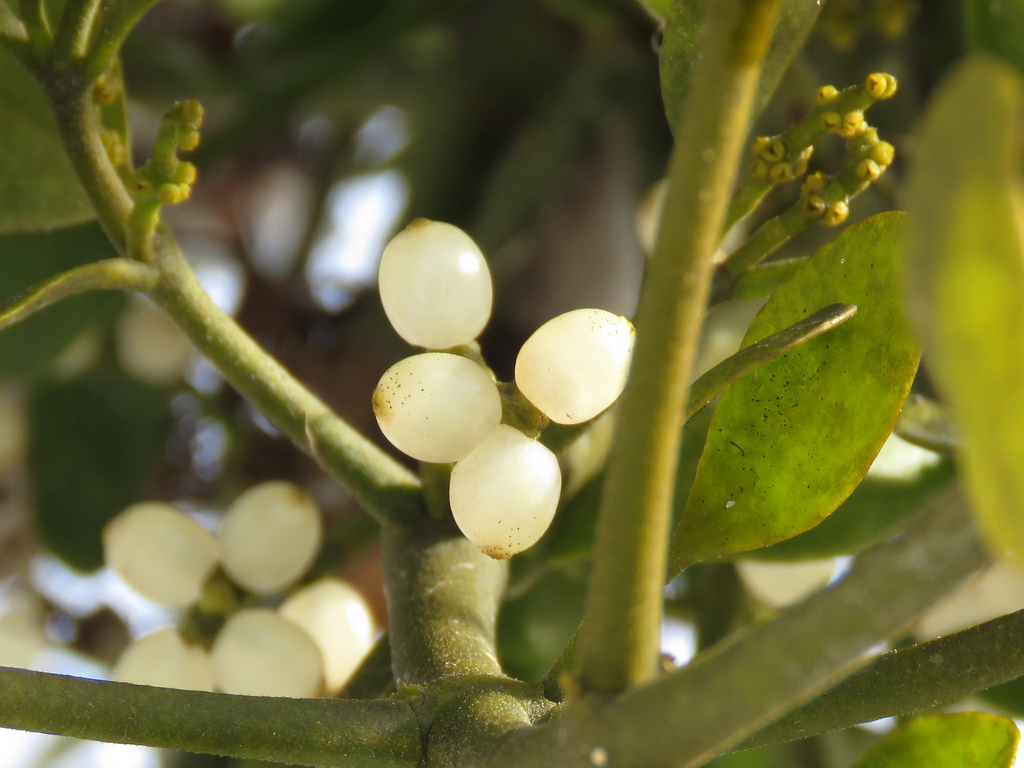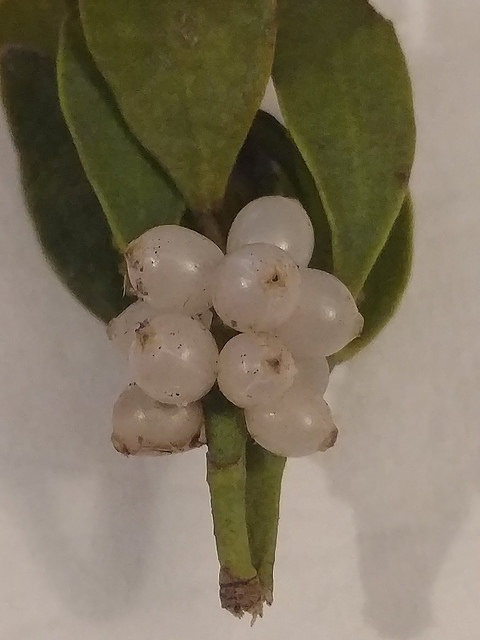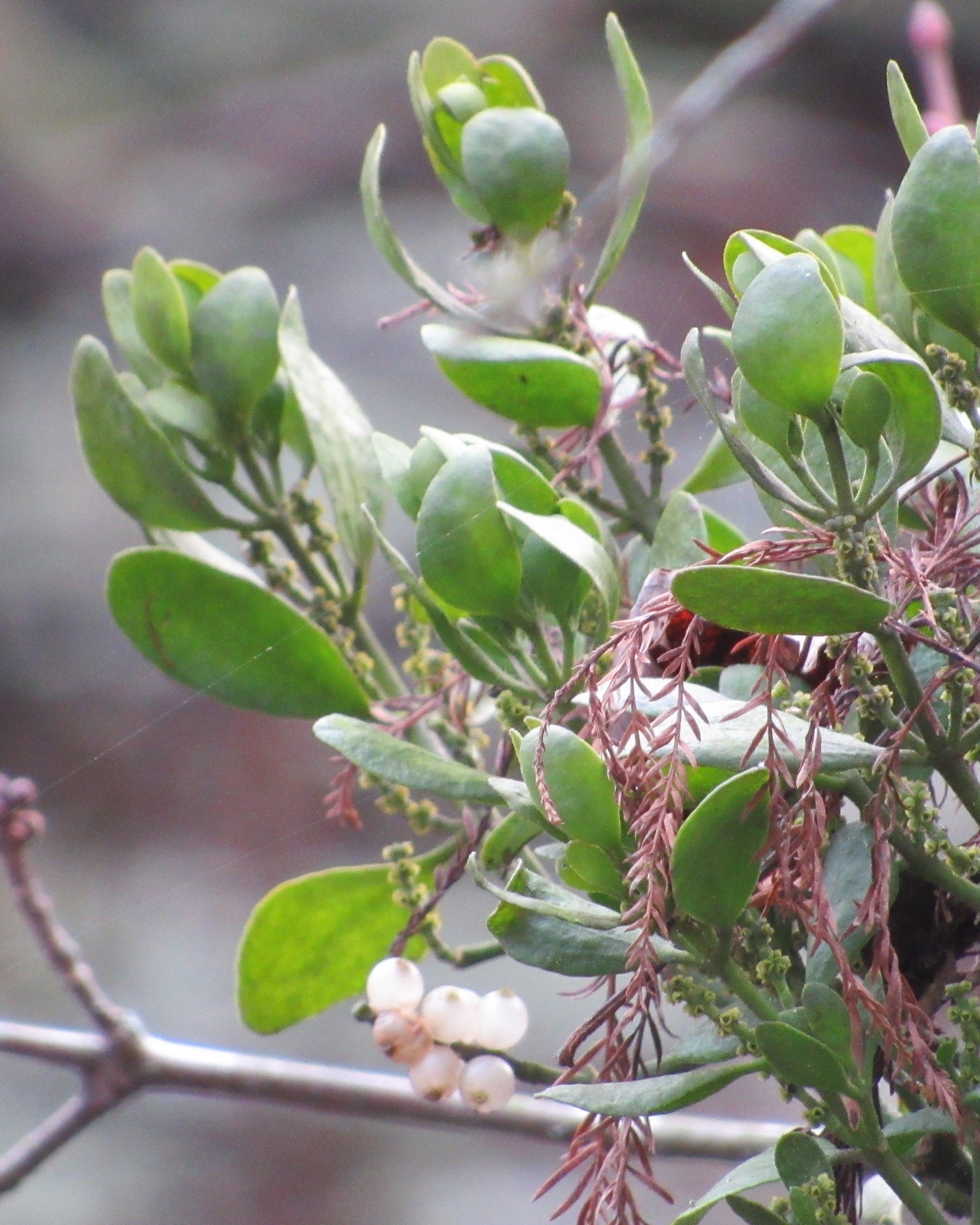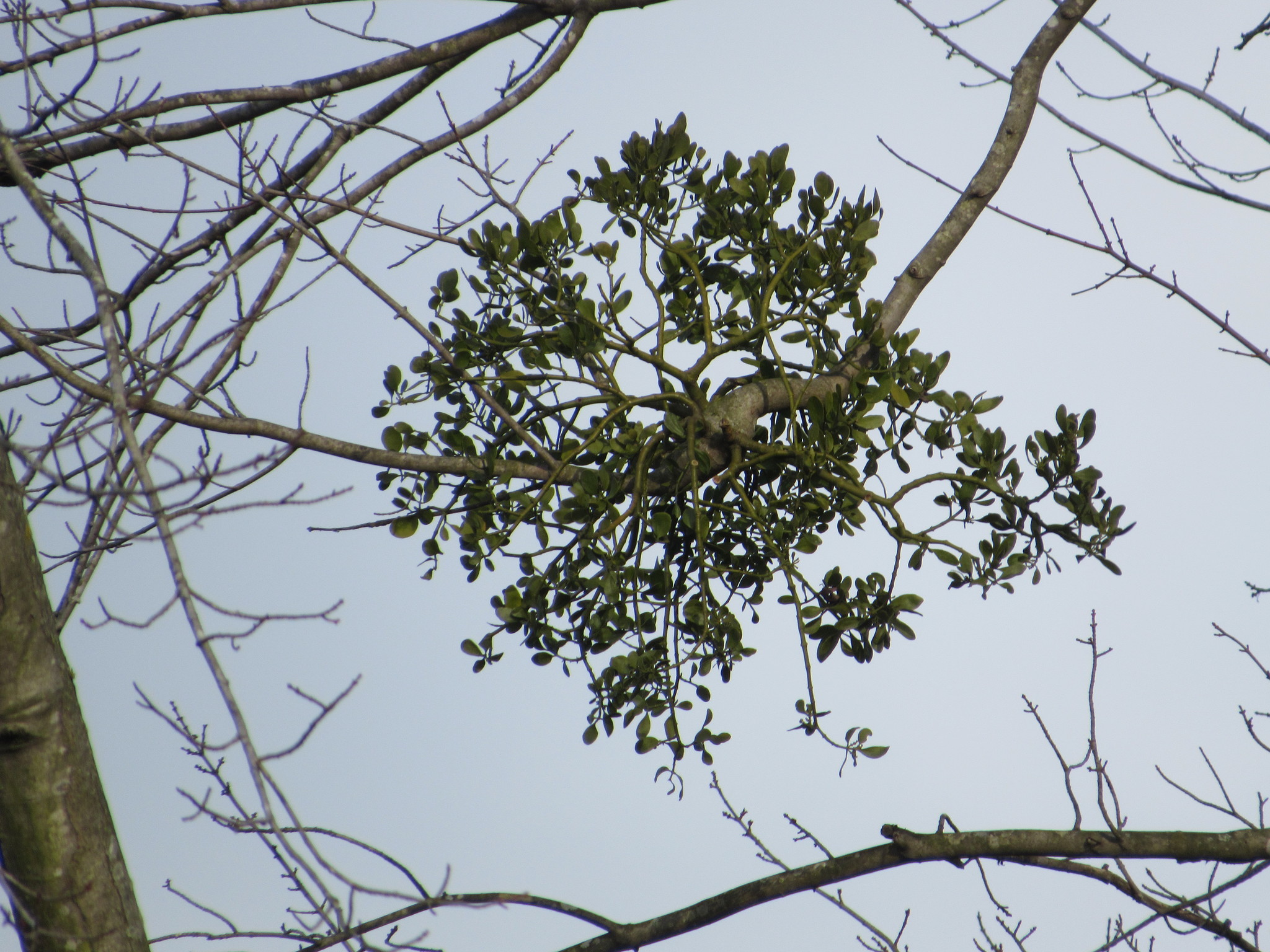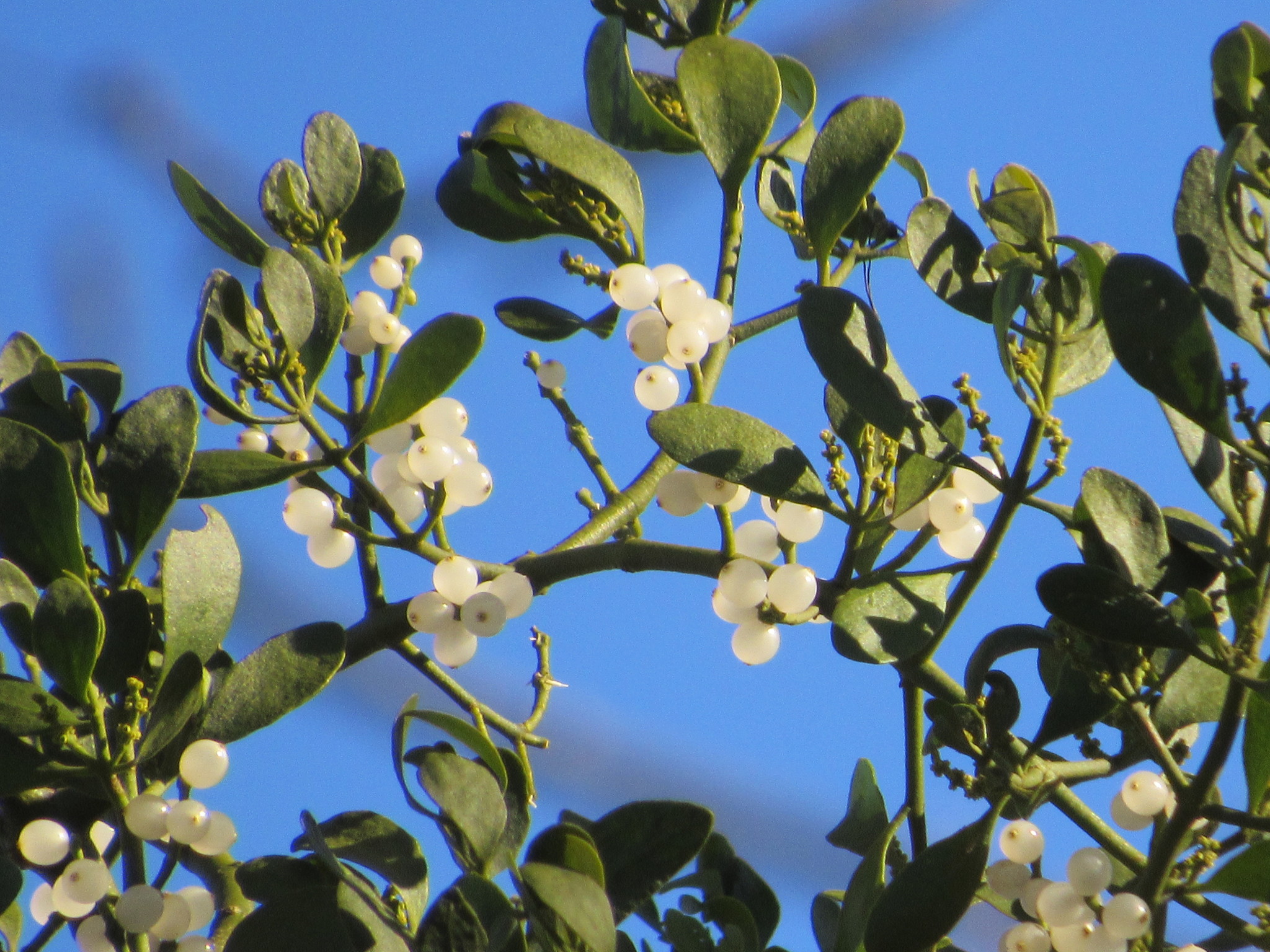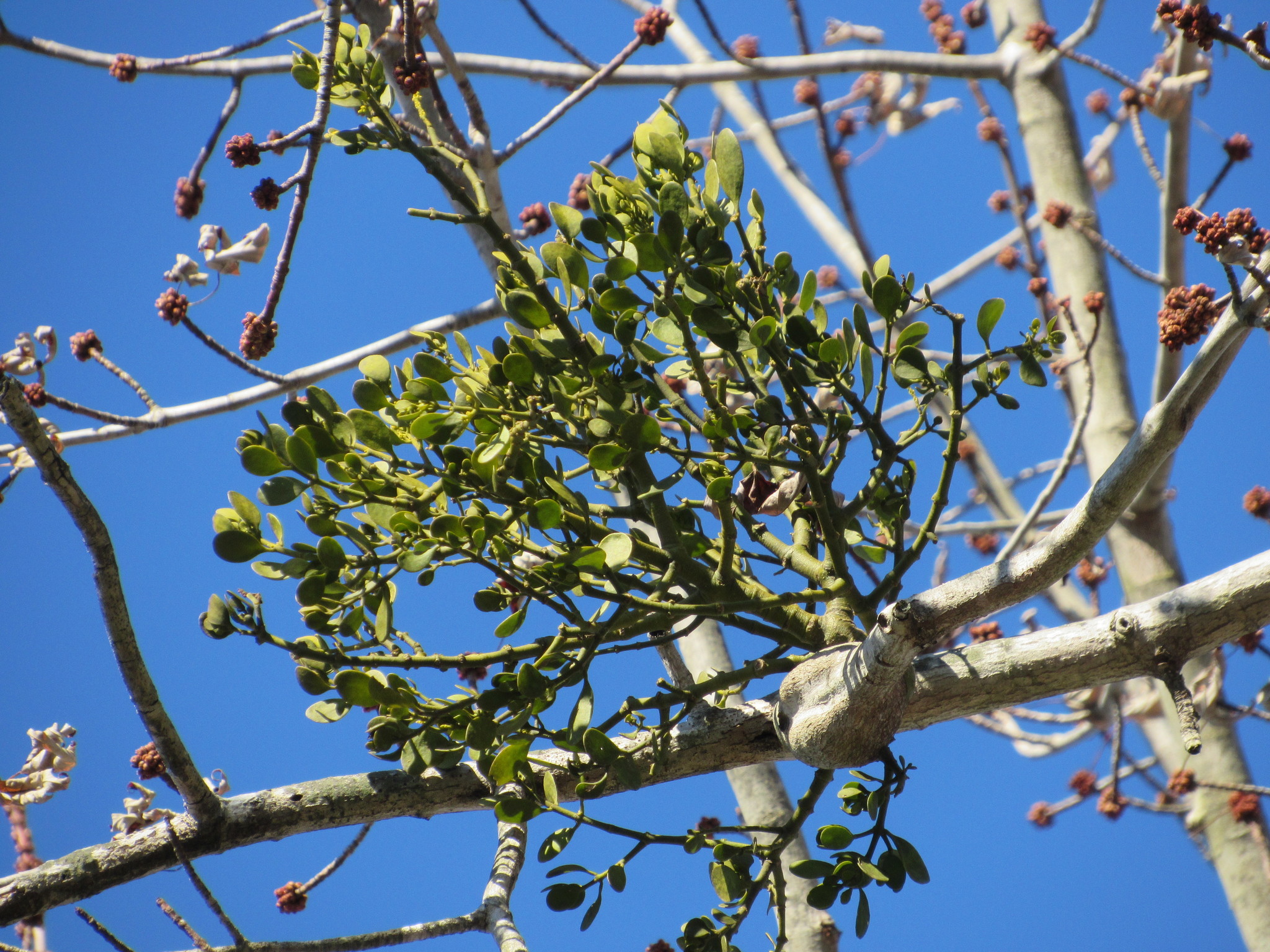

 Synonyms: Oak Mistletoe, Phoradendron flavescens, Phoradendron serotinum.
Synonyms: Oak Mistletoe, Phoradendron flavescens, Phoradendron serotinum.




















American Mistletoe is an evergreen, hemi-parasitic sub-shrub that is native to the southeastern United States. It is typically found growing on Red Maple, but also occurs on oaks, gums (Nyssa spp.), and some other deciduous trees.
American mistletoe has opposite, leathery, evergreen leaves and grows in ball-shaped clumps in tree canopies. Mistletoe produces white berries (technically, drupes) having sticky pulp. These are eaten by birds. As the berries pass through a bird's digestive tract, the pulp remains sticky, enabling the seeds to spread through bird droppings to the branches of trees that the bird lands on. Fruits also disperse by sticking to birds' bills and to their feathers. The seed sprouts where it lands, and small roots emerge. These penetrate the tree bark and develop into haustoria, or feeding organs that can absorb sugars and other foods from the host tree. The green color of the plant indicates that it contains chlorophyll and can obtain some of its food through photosynthesis.
Most common on the coastal plain but can also be found along the Fall Line. Usually occurs in mesic or wet habitats; often abundant in swamp forests (Weakley, et al., 2012). Clumps, or balls, of mistletoe are easy to spot in the winter, when deciduous trees are bare.
Birds feed on the fruits and spread the seeds.
Primary host plant of Great Purple Hairstreak.
There are 448 records in the project database.
| GA | AL | WA | FR | CL | MO | HO | BA | BC | HA | CE | PG | AA | CV | CH | SM | KE | QA | CN | TA | DO | WI | SO | WO |



